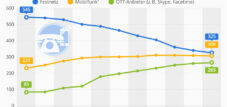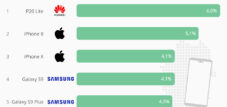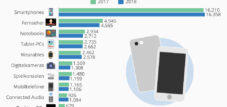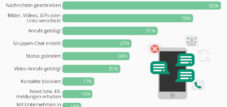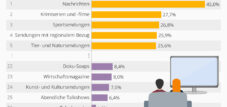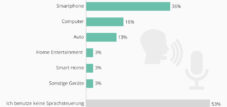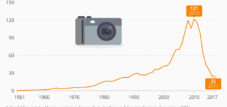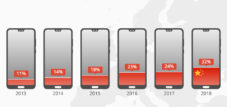Give me a call!
Language selection 📢
Published on: September 20, 2018 / update from: September 20, 2018 - Author: Konrad Wolfenstein
+++ Give us a call! +++ That's how long consumers are waiting in the telephone queue +++ That's why Germans use their smartphones every day +++ This is how Germans communicate +++ Calling and surfing have never been cheaper +++ Expensive tariffs - mobile phone prices in Switzerland ++ +
The new generation of decision-makers is pushing more and more heavily into the management levels. It is Generation Y, also known as Generation Millenium, who grew up as the first generation in a digital world. The way they act and think is very different from the last previous generation: they form a symbiosis with the mobile world, especially with the smartphone. Things are questioned straight away over the phone; the aim is to have short research and decision-making processes. Information that is not immediately tangible is an exclusion criterion. For example, non-mobile-friendly newsletters have a very uneven bounce rate and contact forms are synonymous with relics from the Middle Ages. Back in 2015, Google announced that non-mobile-enabled websites were no longer up to date and would lose in the ranking competition. This has gotten worse step by step until today. No novels on the product and solution pages, but rather landing pages on the specifically targeted topic are relevant. You have to get to the point to win with this digital generation.
Is that so?
If you look around in the private sector, many things are completely different. This suggests that the self-confident approach to this digital world also entails a differentiated approach to the medium in different areas of life. While you want to get to the point professionally effectively and quickly - everything else is a waste of time and boring - you enjoy the multifunctional possibilities of the media world at any place and at any time. Whether it's a cinema experience, e.g. via virtual reality (VR) at home or in the hotel room after a business meeting, you can get the most out of every location. People make fewer calls and enjoy quiet communication via text messages on WhatsApp or other social media channels. Everyone is their own director.
The following topics are correspondingly interesting:
Give me a call!
"Call!" - That was a telecom advertising slogan in the early 1990s , which should encourage the Germans to use the listener more often. While a new edition of the old spots only seems unlikely to make money with telephony these days, the phone calling could use a small image campaign. Because with all the functions that smartphones offer these days, their original purpose is increasingly becoming the background.
Most users seem to be aware of the core competence of their smartphone - mobile phone calls are increasingly being used in Germany - but overall call volume has been steadily declining since 2010. In times of WhatsApp and Co., making phone calls seems to be increasingly out of fashion, especially among young people. Many people appreciate the non-binding nature of text messages; some passionate smartphone users are literally startled when their beloved phone actually rings.
The following graphic, based on data from the Federal Network Agency, shows that the total outgoing call volume has continuously decreased since 2010. Although this development is primarily due to the decline in fixed-line telephony, mobile call volumes also stagnated for the first time in 2016.

That’s how long consumers are stuck on hold on the phone
Almost 8,700 calls to 141 hotlines from companies in twelve industries – that is the 2018 hotline test. Once again Statista and CHIP magazine put telephone customer service in Germany to the test, from mobile communications/telephony to online pharmacies and direct banks. Who offers particularly good advice and how easy are the hotlines to reach? And where is the waiting time shortest?
As our infographic shows, the smartphone repair service hotlines were the fastest this year: it only took 1:05 minutes for callers to get an advisor on the line. With waiting times only four seconds longer, online opticians and electricity suppliers were also quick to answer the phone. For comparison: On average, the test callers were on hold for 1:54 minutes.
Nevertheless: From a consumer perspective, it can be seen that the fastest industries were even faster in previous years.

This is why Germans use their smartphones every day
What do Germans actually do with their smartphones? A survey by comScore investigated this question. Result: Smartphones are primarily used for communication, even apart from SMS and telephony. For example, one in three people uses their device to receive and send messages via email or instant messenger. Weather information comes in third place with a daily usage reach of 26.7 percent, just ahead of social networks with 26.1 percent.

This is how Germans communicate
The telephone is the number one communication channel in Germany. This emerges from the current edition of Seven-One Media's Media Activity Guide According to this, every German uses the phone for an average of 39 minutes per day. It takes 36 minutes to read and write emails. The daily time budget for messenger services is 24 minutes. Depending on age, communication duration and methods vary significantly. The 14-29 year olds speak, type and read for 155 minutes a day, three times as long as the group of over 65 year olds. Younger people are also the only age group in which messengers are the most used communication medium.

Calling and surfing have never been cheaper
Those born before 1990 will still remember that making phone calls and surfing the Internet were once activities that could quickly become a noticeable burden on your account. While in the 1990s a quarter-hour phone call on a cell phone was equivalent to an investment decision, telecommunications services are comparatively cheap in the flat-rate era. Data from the Federal Statistical Office show that prices for landline telephony and internet as well as mobile phone services in Germany have been falling for years. A reversal of this trend is currently unlikely.

Mobile and landline telephony declining
According to the current telecommunications market analysis by Dialog Consult and VATM, every day in Germany. This means that mobile telephony has declined for the second year in a row. So-called over-the-top providers (OTT) such as Skype or Facetime are responsible for this. Currently, 260 million connection minutes are processed every day via software-based OTT telephony. The downward trend of recent years for fixed-line connections continues unchanged. But stationary telephony still accounts for the largest share (38 percent) of voice traffic in Germany with 345 million call minutes.

Expensive tariffs
At 76 percent, most people in Switzerland find the price of their mobile phone tariff too expensive. This was the result of last year's mobile telephony satisfaction survey in Switzerland conducted by the comparison website bonus.ch. The other 24 percent consider the mobile phone prices to be justified, for example due to the country's general price level or the quality of the services.
Around 71 percent of the people surveyed with a fixed contract pay more than 40 Swiss francs per month. Of mobile phone subscribers who use prepaid services, however, well over half (58.4 percent) pay less than 15 Swiss francs per month, while around 42 percent pay upwards of 15 Swiss francs per month.







